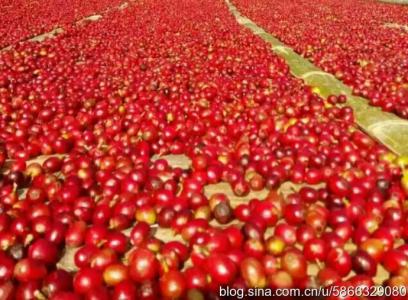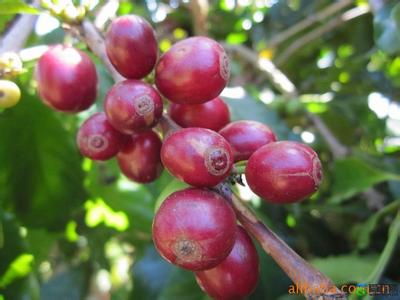How to match the flavor of concentrated beans to describe the taste, planting environment and producing areas
How to match the flavor of concentrated beans to describe the taste, planting environment and producing areas
Give an example to illustrate the difference in baking degree caused by different specific heat. The concentrated beans used in our store pursue the high sweetness of the front, slightly sour in the middle, and the flavor of nuts and chocolate in the back. The mix is made in a certain proportion of Brazil, Kenya and Mantenin. I use the cooked bean matching method, which means that a single bean seed is baked first and then blended. During the baking process (the temperature displayed varies according to the design position of the baking furnace and probe) the temperature of the first explosion in Kenya is about 192 degrees Celsius, and the temperature of the second explosion is about 218 degrees Celsius. Mantenin's first explosion is about 196 degrees Celsius, and the second explosion is about 220 degrees Celsius, while the temperature at which Brazil enters the explosion will be the highest, with the first explosion reaching about 202 degrees Celsius and the second explosion around 228 degrees Celsius.
If the three beans are baked together, the definition of baking degree and taste will be quite vague, and there is no way to judge the overall flavor characteristics of beans and the instability of baking degree, resulting in unstable taste.
The second reason for the instability of customer beans is also caused by hard work-the change in the proportion of coffee beans after water loss. Different beans, after baking, because of different moisture content, the water loss rate will not be the same, after baking, the quality of beans will be different and expected. Most of the blended coffee is blended according to the percentage, so the quality of the beans after baking is about 20% less than that before roasting, because the water content is different, the water loss rate is also different at the same temperature, if you mix and bake, the imagined blending ratio will change with the change of water loss rate, so it is difficult to control the trend of taste.
As mentioned earlier, traditional espresso pursues a balance of tastes. for example, the increasingly well-known World Barista Competition judges the taste of espresso if the barista does not make a special statement. the flavor of Italian concentrate takes balance as the expected flavor. At the same time, it is also pointed out that the focus of today's espresso flavor tasting is that the flavor performance of a cup of espresso depends on the roaster and barista's grasp of the taste. If you want to really taste a certain espresso, you need to consult the barista, or, in some cases, the barista needs to give the necessary explanation to the customer if he wants to convey the flavor of his own espresso.

Important Notice :
前街咖啡 FrontStreet Coffee has moved to new addredd:
FrontStreet Coffee Address: 315,Donghua East Road,GuangZhou
Tel:020 38364473
- Prev

Espresso needs to be ground how thick and thin scale entry Italian Coffee Machine Bean Grinder investigation and Grinding course
Espresso needs to be ground how thick and thin scale entry Italian coffee machine bean grinder begins to extract coffee. If there is no scale on your coffee cup, you need to measure the total weight of the coffee (28-32g). Measuring weight can help you judge whether coffee extraction is fast or slow, which is more accurate than visual measurement of coffee flow rate.
- Next

How to adjust the thickness of the bean grinder? a brief introduction to the grinding scale of flavor and taste characteristics
How to adjust the thickness of the bean grinder-brief introduction to the grinding scale of flavor and taste characteristics 1, follicular coffee (including the so-called American coffee machine, the one that uses filter paper or filter); 2, siphon coffee; 3, mocha pot (also known as Italian coffee pot); 4. Electric Italian coffee machine electric bean grinder because the coffee powder is fine and uniform, so the ground powder is suitable for use
Related
- What is the Philharmonic pressure? How to use Philharmonic pressure to make delicious coffee
- Why does a hand grinder have more fine powder than an electric grinder?
- In addition to the hot mom, what is the difference between the versions of EK43 | ditting and Mahdi ek43?
- What kind of equipment do you need to make coffee by hand? Introduction to novice starter cooking equipment tools
- Espresso needs to be ground how thick and thin scale entry Italian Coffee Machine Bean Grinder investigation and Grinding course
- How much does it cost to open a small private cafe? How much does it cost to learn coffee? How to operate it?
- The difference between the flavor characteristics of hand-brewed coffee and coffee maker is hand-brewed coffee really better than coffee maker? Can I use a coffee machine to make coffee beans by hand?
- The difference between 01 and 02 of hario v60 filter cup what is the difference between 01 and 02 filter cup opening and cooking flavor
- What's the difference between the smart cup and the French kettle? Which is better, the French kettle or the Smart Cup?
- What's the difference between a smart cup and a V60 filter cup? The difference between the taste of smart cup and hand-brewed coffee

